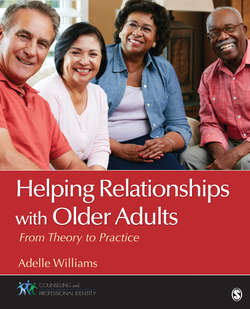Читать книгу Helping Relationships With Older Adults - Adelle M. Williams - Страница 55
На сайте Литреса книга снята с продажи.
Historical Aspects of Aging
ОглавлениеNational interest in aging and gerontology has resulted in major milestones and contributions to the well-being of older adults through a proliferation of research and dissemination of research findings. The federal government began in 1935 to acknowledge and support the needs of the older population, which served as an impetus to changing the landscape for older persons. Such milestones include the establishment of the Social Security Administration in 1935 and the National Institute on Aging (NIA) in 1974 as part of the National Institutes of Health. The establishment of the Social Security Administration was particularly significant, as there were very few officially recognized federal agencies on aging before 1935. At this time, the age 65 was chosen as a reflection of the age used by retirement, or pension, systems that were in place for private industry and state systems.
Several aging-related organizations developed between 1935 and 1950 and more were established after the Older Americans Act (OAA) of 1965 (Smith, 2014). The OAA established the Administration on Aging within the Department of Health, Education, and Welfare and called for the creation of State Units on Aging. State Units on Aging (SUAs) are agencies of state and territorial governments designated by governments and state legislatures to administer the Older Americans Act in their area. States coordinate and oversee the services through Area Agencies on Aging in their particular state (Day, 2014). Also in 1965, Title XVIII of the Social Security Act, a health insurance program for the elderly (also known as Medicare), was established as well as Title XIX, a health insurance program for low-income persons, known as Medicaid.
Additional amendments to the OAA authorized funding for nutrition programs for the elderly; grants for multipurpose senior centers and employment programs; and transportation, congregate housing services, home care, legal services, and home renovation/repair services. The OAA established a long-term ombudsman program to cover nursing homes and emphasized supportive services to help older persons remain independent in the community while expanding ombudsman coverage to board and care homes. The Long-Term Care Ombudsmen are advocates for residents of nursing homes, board and care homes, assisted living facilities, and similar adult care facilities. They work to resolve problems of individual residents and to bring about changes at the local, state, and national levels that will improve residents’ care and quality of life (U.S. Department of Health and Human Services, 2015).
Many other notable events related to aging and gerontology have occurred to date, including resource centers, research, consortiums, additional amendments to the OAA, White House Conferences on Aging, enactment of the Medicare Prescription Drug Act, NIA activities, and the development of the Administration for Community Living (ACL). The ACL brings together the Administration on Aging, the Office on Disability, and the Administration on Developmental Disabilities to focus on reducing fragmentation in community living services (Smith, 2014). The Age Discrimination and Employment Act of 1967, amended in 1978, ended mandatory retirement in the federal government and advanced it to age 70 in the private sector. Mandatory retirement at all ages was abolished in the United States in 1986 (with a few exceptions), and the European Commission has mandated that members of the European Union have laws making age discrimination illegal in place by 2006.
Although the underlying dread, fear, and distaste for older persons remains for some individuals, several trends may reduce ageism in the future: (1) With the aging of baby boomers, old age is in the process of being redefined as a more robust and contributory stage of life. (2) Increasing interest in aging in the general public, mass media, government, and academia will support increasing knowledge and reducing misconceptions about older persons. (3) Increasing scientific research on aging has reduced and will continue to reduce ageism by providing a realistic picture of older persons. (4) Stereotypes are being challenged and disproven. For example, in 2009, for persons 65 and over, 77% had completed high school or more education, and 20%completed a bachelor’s degree or higher education (U.S. Census Bureau, American Community Survey, 2009), challenging the stereotype that older men and women were illiterate or poorly educated. (5) As people become more aware of racism and sexism, they tend to become more aware of discrimination in general and will be less likely to approve of or practice ageism (Palmore, 2004). Numerous developments, both positive and negative, have evolved over time. However, a re-evaluation of pre-existing negative patterns of behavior is necessary to encourage greater participation of older adults in all aspects of society.
